In March 2022, POP hosted an orchard pruning workshop at Sankofa Farm at Bartram’s Garden led by POP staff and orchard volunteers. After an in-depth review of tools and terms, eager participants representing community gardens and orchards across the city got hands-on training in tree care and pruning.
The workshop offered an opportunity to connect with other tree tenders, urban farmers, and garden enthusiasts in the orchard. As we said our goodbyes, many bundled up handfuls of peach, plum, and cherry sticks and branches cut during pruning to bring home and enjoy beyond the workshop.
Ainhoa Woodley (POP Lead Orchard Volunteer) and Kim Jordan (POP Co-Executive Director) shared that the cuttings with buds will flower in water and make brilliant arrangements. Another way to appreciate the beauty of the winter orchard at home is to harvest the natural color in the bark and create your own inks, dyes, and natural art materials. Making botanical ink from the pruning cuttings captures the experience of connection with the community of fellow orchard caretakers and the trees of the orchard themselves, in toasty peach, warm orange, and dreamy caramel tones.


Left image: Prunings gathered at the POP Pruning Workshop at Bartram’s; Right image: Botanical Ink made using pruning cuttings. (Photo Credit: Nicole Dupree)
HOW TO MAKE NATURAL INK
for drawing, brushwork, and writing with dip pens
Tools & Materials
+ Cuttings from winter pruning (e.g., peach, plum, cherry)
+ Vessels: a couple of glass jars or plastic containers
+ Strainer: mesh strainer or piece of old t-shirt fabric
+ Saucepan, dye pot, or enamel crock pot
+ Water
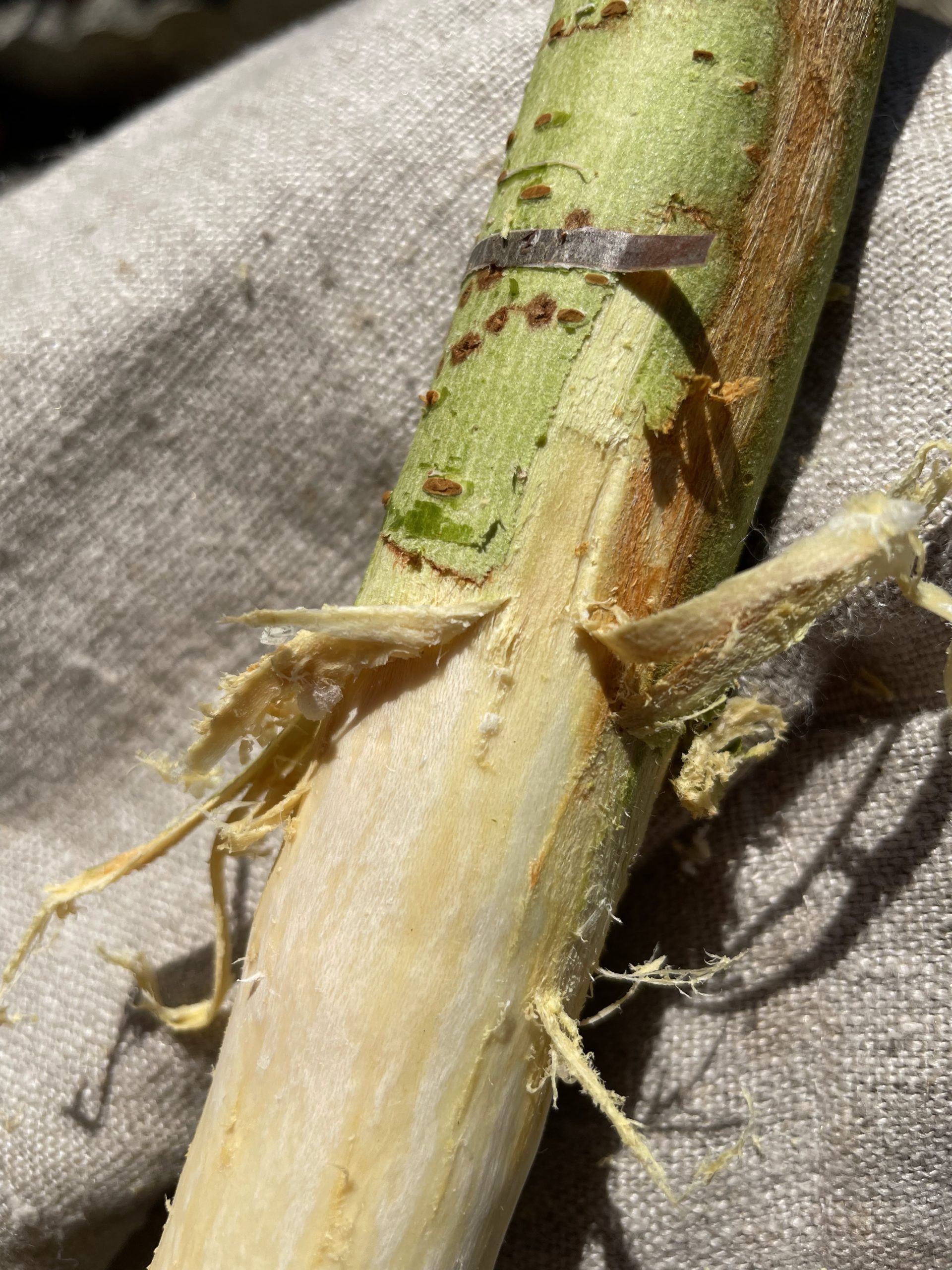
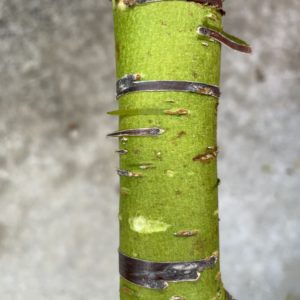
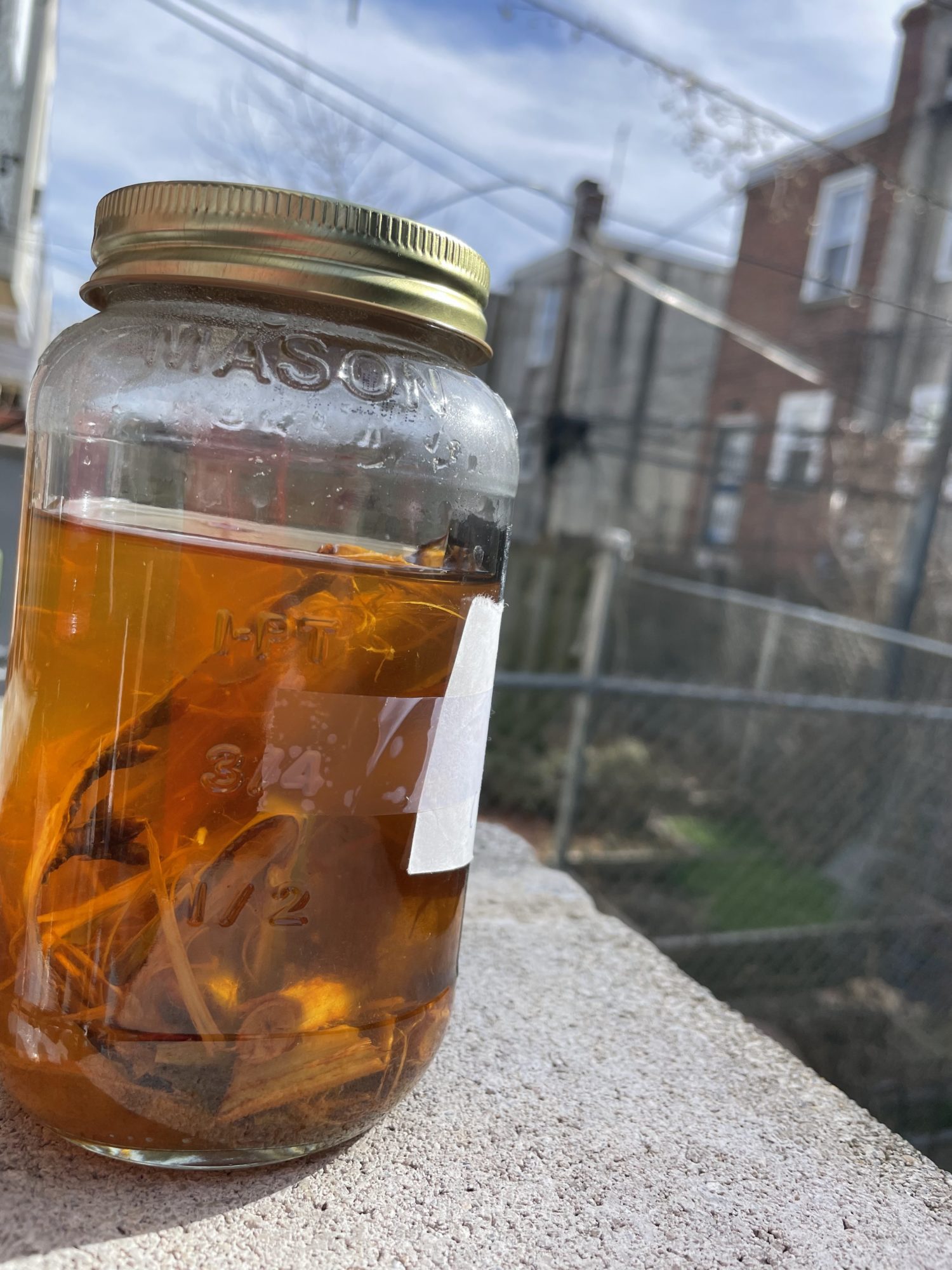
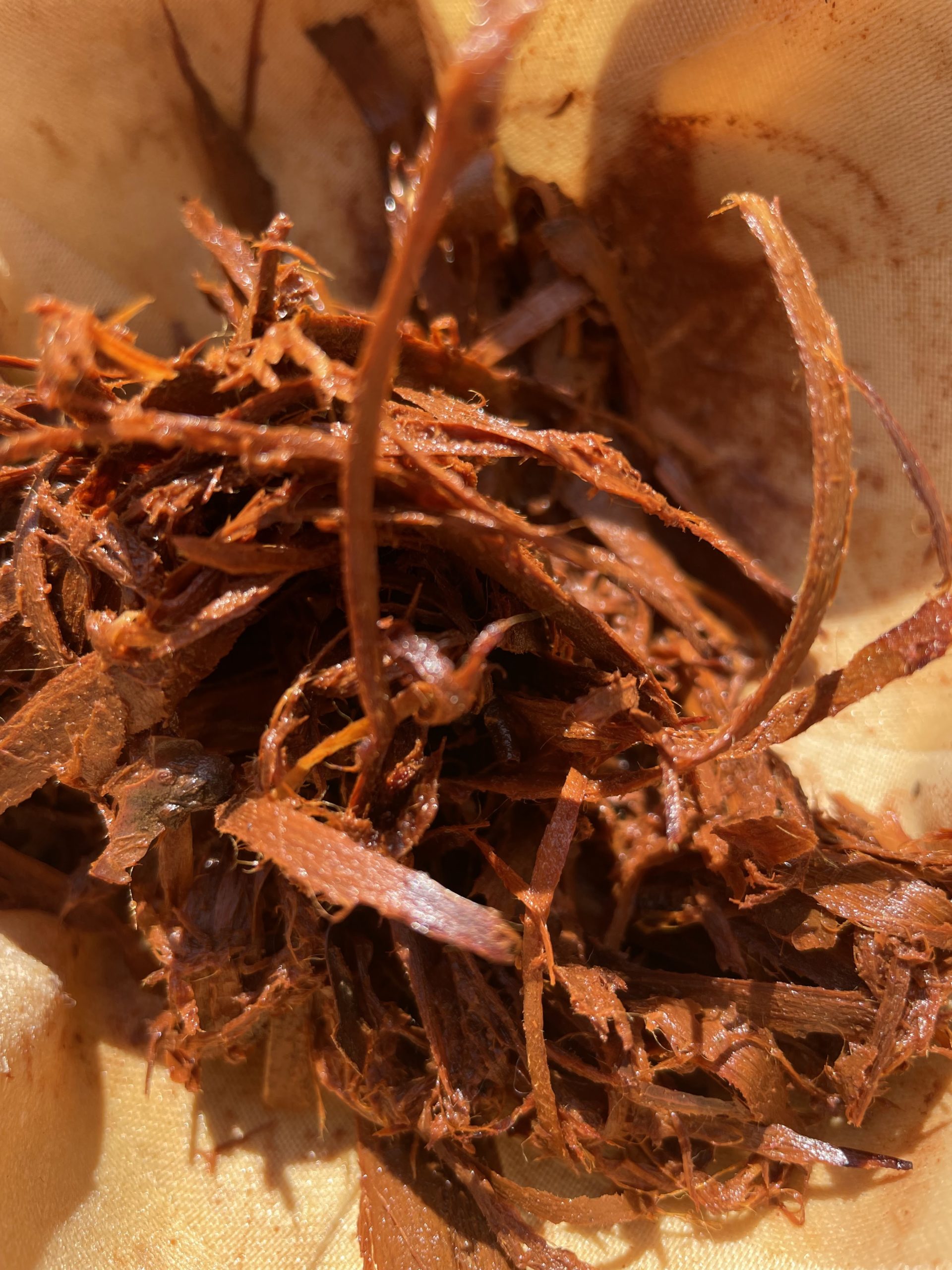
(Photo Credit: Nicole Dupree)
Collect the bark. For cuttings ~1 inch thick, remove and compost the purplish outer bark. Scrape off and collect the greenish layer and soft layer of bark underneath. For thinner cuttings and twigs, break into smaller pieces, pulling back the smooth outer bark. In a container (or your saucepan/pot), collect the twig pieces and soft bark. You may see some of that soft inner bark start to change color with exposure to the air!
Soak/Steep the bark. Add hot water to cover the bark and pieces of peeled twigs. Cover with the lid and let the plant material steep until cool or up to a few days.
Simmer. Transfer the bark and water to your stock pot or saucepan. Over low heat, simmer the mixture for about an hour. When the color is to your liking, turn off the heat. Allow to cool. To extract deeper colors, let sit overnight and simmer again.
Strain. Using a piece of fabric, old t-shirt material, a mesh strainer, or coffee filter, strain out the bark. You can add the leftover bark and cut up twigs to the compost pile or cover with water again to see if you can extract even more color! Test the strained dye/watercolor/ink on paper. What do you think?
Reduce. For more concentrated color, evaporate more of the water by returning the ink to the pot to simmer and reduce liquid to about half of the starting amount. Check regularly to be sure not to over evaporate and burn in the bottom of your saucepan/pot.
Create! Now you have ink! Great for ink drawing and painting on paper.
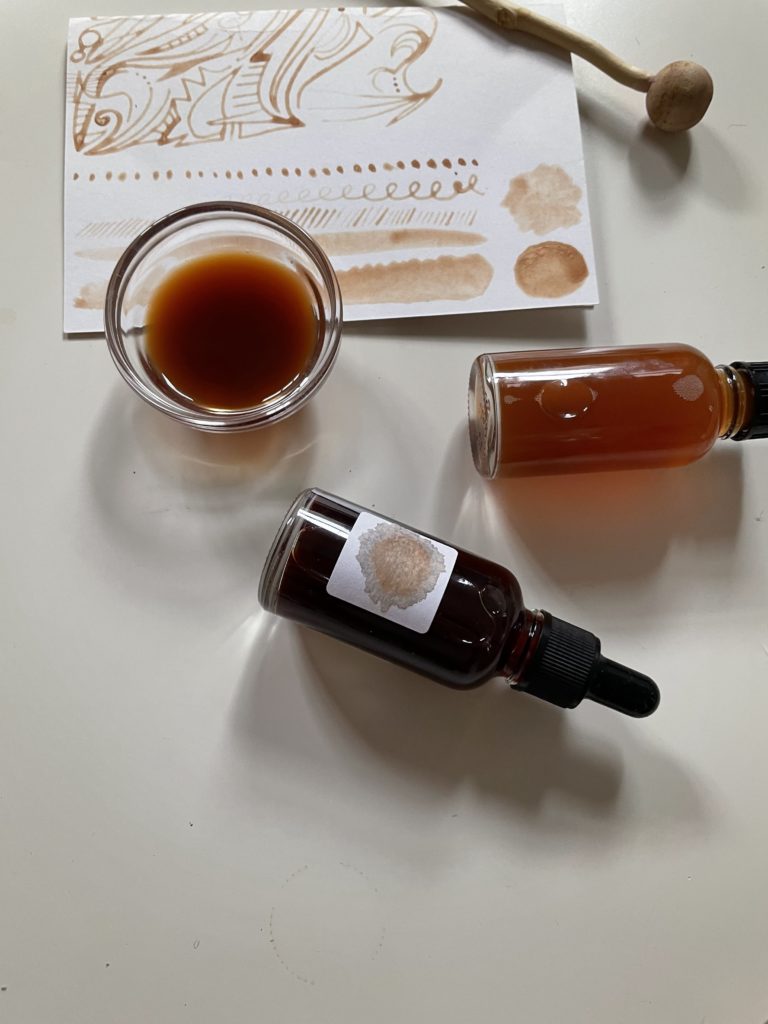
More to Explore
+ Preserve. Add a clove, a bit of honey, clove oil, or wintergreen oil to your ink to preserve it.
+ Brushes, dip pens, & more. Try experimenting with different brushes, or making your own dip pens—use a pencil sharpener to create a point at the end of a stick or a feather for a quill
+ Try cuttings from other trees and plants. After pruning other trees (apple, pear, etc.), see what color ink you might get from those!
+ Color shifts! See what happens if you add a bit of baking soda or vinegar. Like the changing of seasons, and time passing in the orchard, over time these colors may shift too. Keep a record by taking pictures and recording the date to note transformation of these living colors!
Natural color exploration can be so exhilarating–full of awe and wonder. While creating a bottled document of a season, a place, and a plant, it forges relationships, marks time, and develops connection with our environment. May this spark more curiosity about the natural colors found in the orchard and green spaces around you and may you never think of pruning the same ever again!
This blog post was contributed by Nicole Dupree of Ampersand Textile
Additional Resources
POPCORE Fruit Tree Pruning Video Series
Other Natural Dye Experiments: Purple Perilla
+ Make Ink, Jason Logan
+ The Organic Artist, Nick Neddo, 2015
SUPPORT US! If you found this entry useful, informative, or inspiring, please consider a donation of any size to help POP in planting and supporting community orchards in Philadelphia: phillyorchards.org/donate.